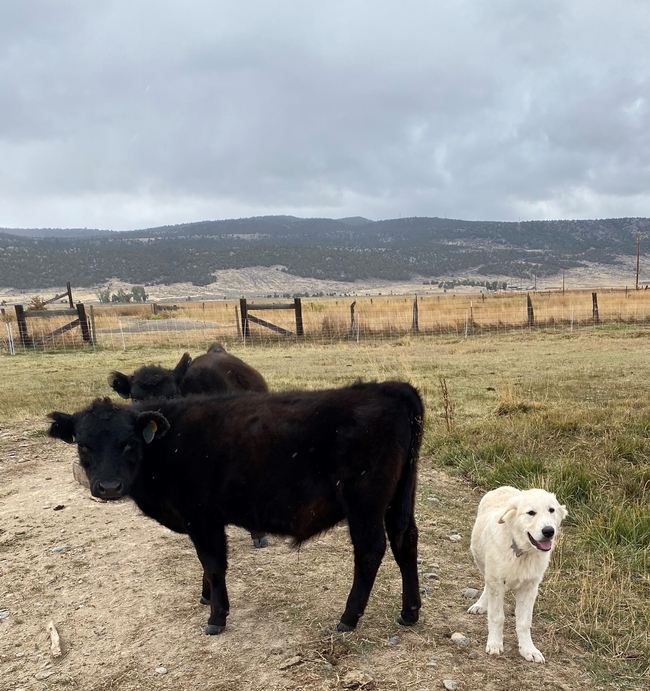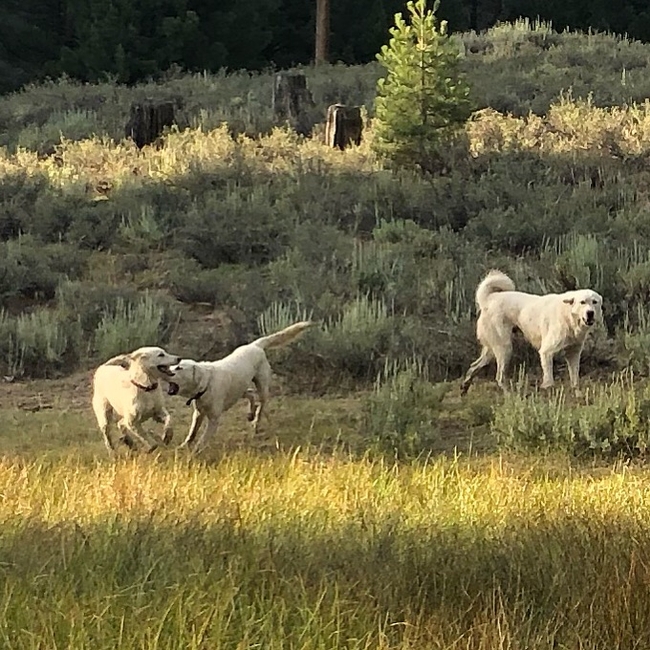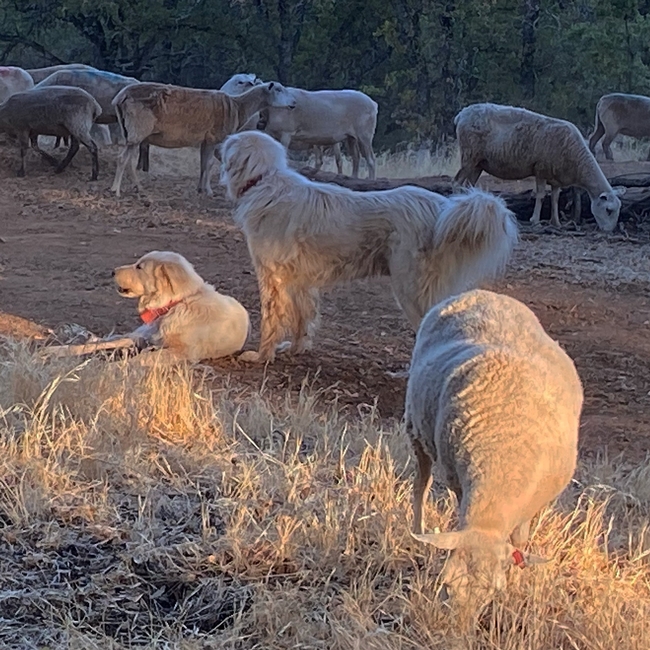One of the hazards of referring to livestock guardian dogs (LGDs) as predator protection “tools” is that we seem to think of them like other tools. While one claw hammer might be reasonably interchangeable with any other claw hammer, I've found that every LGD I've worked with is an individual with his/her own personality, strengths, and weaknesses. Just as I wouldn't use a claw hammer to install a wood screw, I wouldn't use each of my dogs identically. That said, I certainly didn't realize this nuance when I started using LGDs!
Researchers (and I include myself in this) have a tendency to want neat models against which to test our hypotheses. This approach can lead to “hard-and-fast” rules that might work for experiments but that have little basis in real-world management. For example, there are several scientific papers that suggest that the proper ratio of LGDs to livestock is 1 to 100 – that is, for every 100 sheep in a flock (or cows in a herd), a rancher needs one dog to optimize predator protection. In reality, the ratio of dogs to livestock is much more fluid; it depends on the individual dog, the predator pressure and environment, the stage of production for the operation, and a host of other factors. The researcher part of me wants this definitive ratio; the rancher and extensionist in me knows the answer to question, "how many dogs," is always, “It depends.”
We currently havethreeLGDs in our small sheep operation, which is at least one too many for part of the year. During our 6-week breeding season, we have three groups of sheep (two breeding groups and our replacement ewe lambs, which are not big enough to breed). Typically, we keep one dog with each group. Following breeding, however, we combine all three groups into one larger mob and separate the rams. In our environment (and since we also use electric fence), one dog can usually protect the big mob until we start lambing in late February. Depending on where we put the rams post-breeding, we can sometimes get by without putting a dog with them. Once we start lambing, though, the dogs' work becomes more challenging. We lamb during a time of year when there is not much “natural” prey for the coyotes and mountain lions here in the foothills. We lamb on pasture, typically in paddocks that are 8-10 acres in size, with rolling terrain and substantial brush and/or tree cover. Consequently, we find that we're more comfortable with two dogs during lambing (as are the sheep). Once we wean the lambs in late June, we run the replacement ewe lambs and feeders separate from the main flock again – and keep a dog with each bunch.
Over the last four summers, I've been working with a large-scale sheep operation that grazes on the Tahoe National Forest north of Truckee. They typically turn out 3,000-plus ewes and rams in three bands of roughly 1,000 ewes each. These are dry ewes; that is, they don't have lambs at their sides. While there are many predators present on the landscape (our trail cameras have picked up coyotes and black bears, and gray wolves have occasionally traversed the region), there is also a plentiful supply of natural prey – fawns, in particular, but other smaller mammals, as well. As a result, the sheep operation has been able to get by with just 1 to 4 dogs per band – and has experienced fewer than 5 ewes lost to predators in the four years I've been researching their use of dogs.
Most cattle producers in California have little experience in working with LGDs, and their natural assumption is that the dogs need to protect all of the cattle, all of the time. In talking with ranchers in the Northern Rockies who are using LGDs to protect cattle, I suspect the reality of using dogs with cattle is based on the situation – just as it is with sheep. Dogs are placed with groups of cattle that are particularly vulnerable to predators – first calf heifers during calving season, for example, or stocker cattle that may be grazing in an area with greater predator pressure. Other classes of cattle may not be as susceptible to predators – because of the stage of production or the area in which they're grazing.
This situational approach suggests that some producers have specific times of year when they may not need ANY dogs. Again, unlike that claw hammer, a dog can't simply be put back in the tool box and stored until needed. We “store” our extra dogs with our sheep – at the moment, we have two dogs with one of our breeding groups, even though one would suffice. Other ranchers tell me that they sometimes kennel an extra dog for short periods, or they'll allow a well-bonded dog to decide which particular group of livestock it wants to “protect.”
Understandably, fitting LGDs into a complex cattle operation might be difficult. Consider an operation that manages cattle with multiple irons and/or ownership arrangements, on a combination of owned and leased private land, as well as federal land. Add in stocker cattle (which may be owned or grazed for other producers), heifers that may need a little extra attention at calving, grazing permits that require cattle to be dispersed out of riparian areas, and other considerations – adding dogs quickly becomes extremely complicated. Other predator protection tools might be more viable. And each ranch will likely have some level of predator problems that are within acceptable limits.


